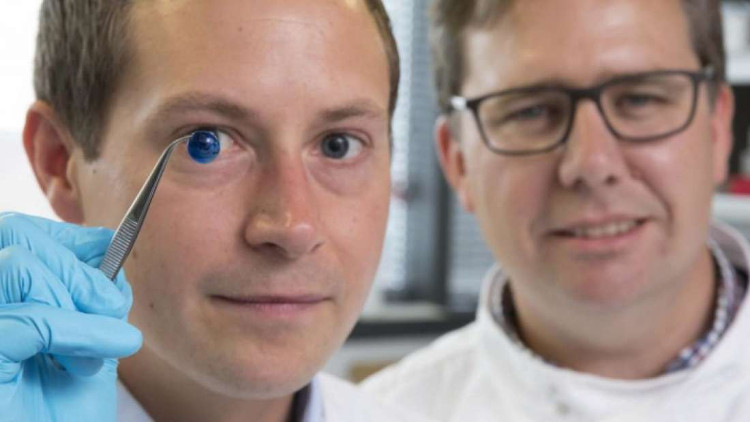3D printing gets both corneas and implants successfully, people really come to the future
The cornea - one of the most delicate parts has also been successfully printed. What else can science not do?
Currently it may not be too new, with many applications in the manufacturing industry.
However, medicine now has extremely unexpected applications with 3D printing technology, when it is possible to "print" human organs. And most surprisingly, scientists have recently succeeded in printing the cornea - the outer shell of the eye, which controls the amount of light that converges into the eyeball.
This is an extremely important part when up to 5 million people are blind from corneal injury each year. On the waiting list of hospitals, about 10 million people are waiting for a transplant. Corneas normally come from donors after they die, but such supplies are never enough.
Yet for the first time in history, scientists from the University of Newcastle (UK) have successfully printed the cornea , using a printer with extremely low cost. It will print a layer of biological ink, zoning it into concentric circles to shape the cornea. The patient's stem cells are then added to make the cornea more complete.

The cornea is printed (blue).
Although ink, but the final product has no ink color, but completely transparent. In the picture is also the cornea printed, but has been added to make the observation easier.
"A lot of research groups around the world have pursued this idea, to make it a reality, " said Che Connon, head of research, professor at Newcastle University.
"Our special gel - a combination of alginate (thickener) and collagen that allows stem cells to survive, while also creating materials that are durable, but soft enough to be able to spew from the tap. print".
"This result comes from previous research, when we kept living cells at room temperature. Right now, we are using biological ink to hold down stem cells, so they don't grow into cells. independence".
The researchers scanned the patient's eyes, to print a complete cornea and match each individual eye. Fortunately, the cornea has no blood vessels, so this process is easier.
However, Professor Connon must add: "The printed cornea now needs to undergo some tests in the next few years, before it can be officially applied in medicine."
"However, what has done shows a great potential for a future where millions of blind people see light again."
- Organ transplants with 3D printing technology
- Magic 3D printing technology
- 3D printed organs bring hope of cheap transplants
- Artificial cornea was born
- China successfully implanted 3D blood vessels into monkeys
- Successfully implanted 3D print vertebrae on human body
- The breakthrough technology of the world medicine in the past time
- China successfully cultivates and implants ears from cartilage cells
- Learn about 3D printing technology
- Korea: Artificial breast implant with the first 3D printing technology
- The neck vertebra transplant surgery with the first 3D printing technology was successful
- The house is made of 3D wood in the future
 Green tea cleans teeth better than mouthwash?
Green tea cleans teeth better than mouthwash? Death kiss: This is why you should not let anyone kiss your baby's lips
Death kiss: This is why you should not let anyone kiss your baby's lips What is salmonellosis?
What is salmonellosis? Caution should be exercised when using aloe vera through eating and drinking
Caution should be exercised when using aloe vera through eating and drinking Corneal extracted from pig skin can restore vision for blind people
Corneal extracted from pig skin can restore vision for blind people  Inventing a gel that heals corneal lesions without surgery
Inventing a gel that heals corneal lesions without surgery  Real damage information Israeli eye drops can treat myopia
Real damage information Israeli eye drops can treat myopia  A part of the body, not injured, doesn't bleed, you know?
A part of the body, not injured, doesn't bleed, you know?  Detecting the 6th layer in the human eye
Detecting the 6th layer in the human eye  'Patch' helps restore eyesight
'Patch' helps restore eyesight 